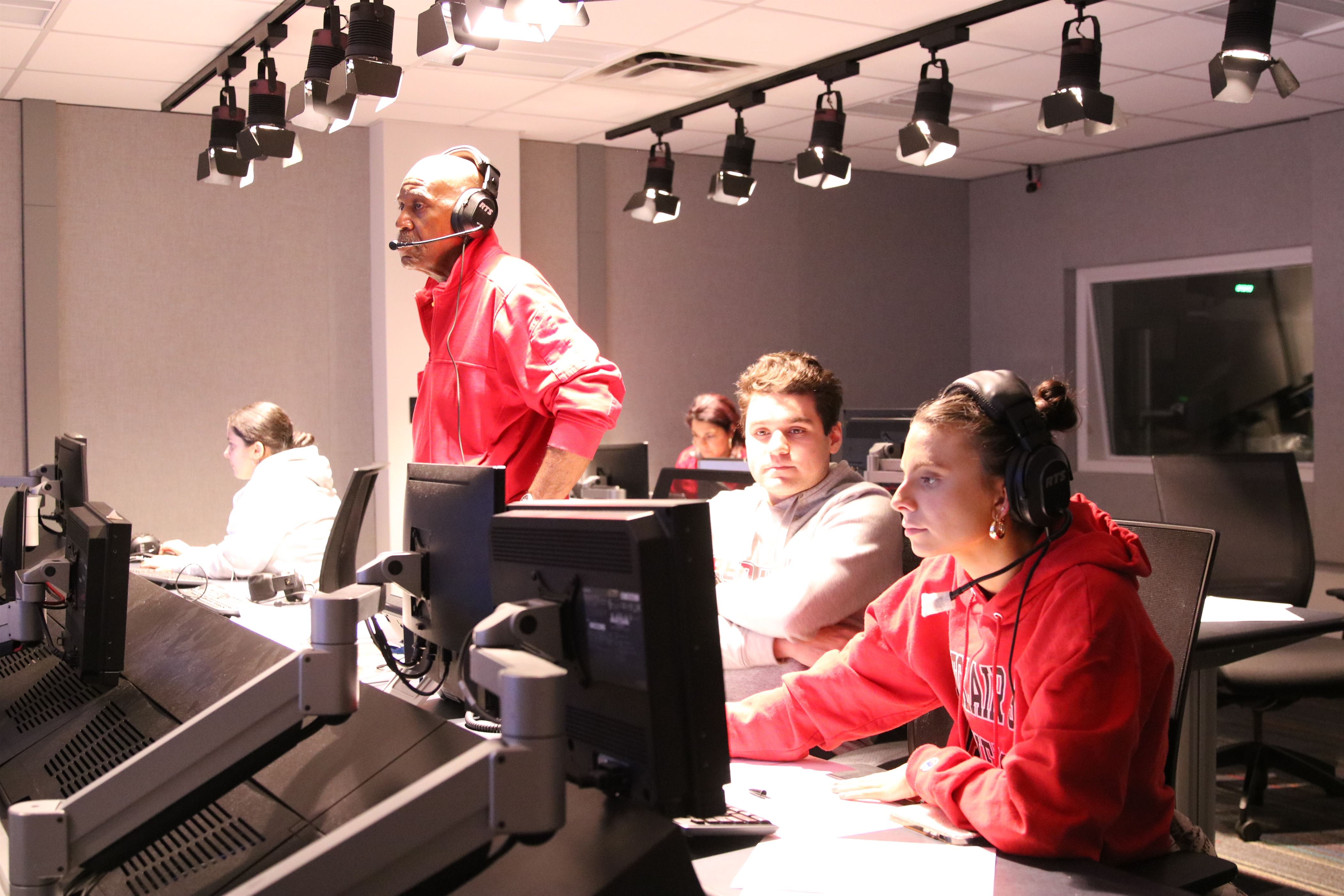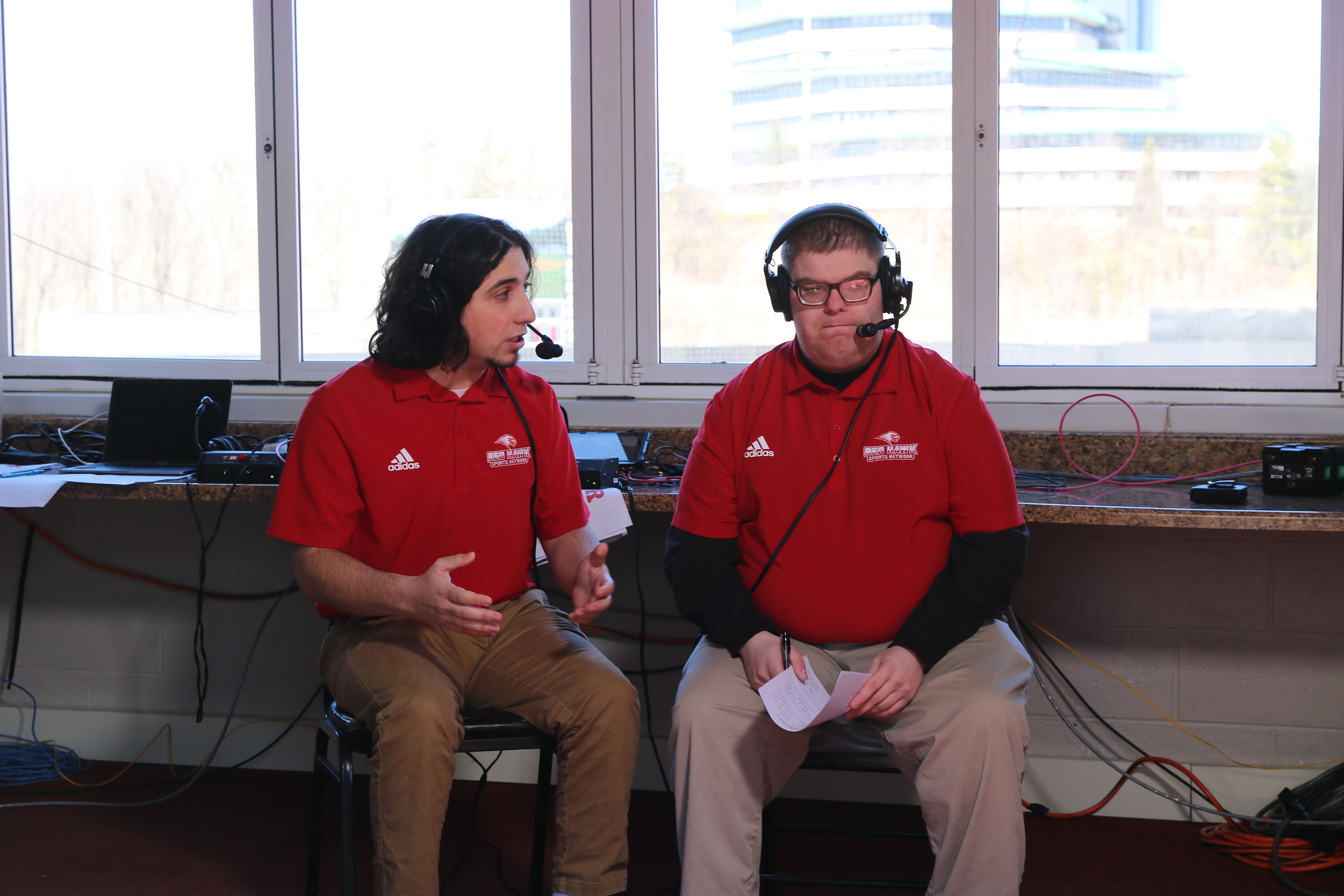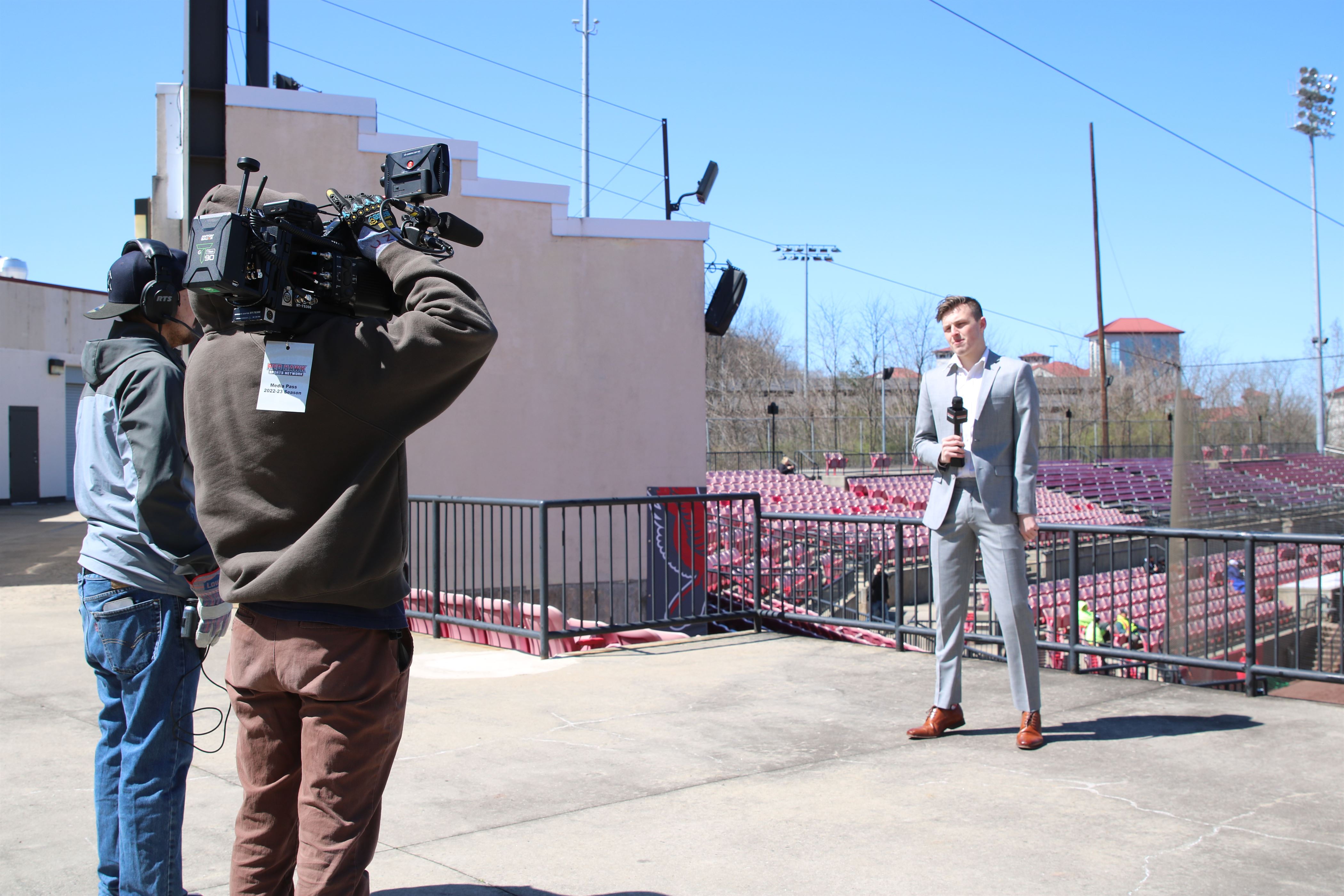The Montclair State University baseball team was not the only one to come out with a win on Sunday. The Red Hawk Sports Network (RHSN) put on a stellar broadcast of the double header including a pre-game show, post-game show, multiple broadcast teams, sideline reporters, several different cameras in use and a control room producing the professional-grade action.
RHSN was able to partner with Broadcast Media Operations (BMO) for the second time this year for another live show. After a successful show in the fall with Homecoming, RHSN and BMO decided once wasn’t enough. BMO, excited about the partnership, decided to do the live show once a semester, letting RHSN choose what the event is. Professor Stacy Gtilin and Adam Goldberg, the chief engineer at BMO, immediately got to work after Homecoming to prepare for the spring.
“After homecoming, [Goldberg] said, ‘What are we doing for spring, we’re ready to start planning now.’ It takes a lot of planning on [BMO’s] end to do walkthroughs and infrastructure and make sure they’re working,” Gitlin said. “The Jackals had just left Yogi Berra Stadium. We thought it’d be really interesting and nice to showcase the stadium that is ours now.”
The idea was originally to do the Red Hawks’ home opener in March, but with five game cancellations that month, they decided to wait until the first New Jersey Athletic Conference (NJAC) match-up of the year, which was the doubleheader against Rutgers University-Newark.
“NJAC is really where we care about the schedule anyway. It’s a team that all of our fans know. It ended up being Rutgers-Newark,” Gitlin said. “That was back in November, that was the beginning of planning. That planning is really just technology, making sure the athletics department is on board with us doing it. Between myself and Professor [Vernard] Gantt, we filled out all the positions [and] we started feeling out what students would be available.”

The control room, led by Professor Vernard Gantt, watches as they set up for the broadcast.
Photo courtesy of Maria Barbieri
After months of planning and preparation, the day finally arrived on April 2. RHSN was split between two teams, the on-camera broadcast team, including pre-game show hosts, game commentators and sideline reporters, and the behind-the-scenes production team of producers, camera operators and a control room keeping everything in check.
Camera operator and co-director sophomore Ryan Tullio operated camera one, located at centerfield for the first game, and then headed to the control room for the second to direct the broadcast. He appreciated the opportunity to do both to further gain experience in the future.
“I like being on the production end,” Tullio said. “Doing both gives me the best opportunity to be a well-rounded producer for my future career. Knowing how to do everything is definitely important and I think the sports network definitely does a good job with that.”

Broadcasters Anthony Cafone and Campbell Donovan report on the game before it starts. Photo courtesy of Maria Barbieri
On the broadcast side of things, junior RHSN intern Matt Bruchez explained what it was like to be one of the sideline reporters during the doubleheader. Bruchez had the responsibility of reporting from the field and finding people ranging from coaches and players to fans from the stands to interview during the game.
“Ever since my freshman year, I’ve loved being on camera, especially sideline reporting. I think that is what I’m going to want to do for my future,” Bruchez said. “I really love the adrenaline rush when you’re on the field talking to the coach after a crazy inning or postgame after they just lost in a heartbreaker. To interview him and see where his head’s at is very different than anything else.”
The show as well as the games were originally scheduled for Saturday, April 1, but impending rain and thunderstorms pushed everything back a day.
“We did two full days of set up from nine to four, Thursday and Friday,” Tullio said. “BMO was really good to help us out with that because it was easier with them than if we were on our own. Saturday being rained out, we were originally planning on putting cameras up on foul poles. When it rained, we couldn’t leave those cameras out so we had to do that Sunday morning which caused some issues but we eventually worked through it.”
Sunday proved to be a nicer, sunny day but was still cold, especially when the sun went down during the second game, which brought on more challenges.
“Baseball was different than football because we weren’t just preparing for the live show, but we were fighting the elements,” Bruchez said. “The live show was supposed to be on Saturday, but with the impending rain and thunderstorms, we had to postpone to Sunday so we had to adapt. On Sunday it ended up being so cold and Gianna [Daginis] and I were very cold on the sidelines. It wasn’t just how well can we present this broadcast but how can we stay warm and do our best we can.”
These types of broadcasts are such a great and important way for students to get involved and gain experience in what the real world of production and broadcasting is like. These kinds of broadcasts are also a great recruiting tool for student-athletes to put together highlight reels. RHSN had several multi-camera games during the basketball season where recruiters were in attendance and raved about the coverage they provided during the game.
The greatest thing about it is it’s all student-run.
“It’s a huge source of pride for the [School of Communication and Media], for [RHSN] to know that all our productions live, Inside the Nest taped, is student-run production,” Gitlin said. “We have myself, Professor Gantt, Professor [Kelly] Whiteside and Professor [Stephen] Andon overseeing and giving advice, but at no point do we take over. Our job is to guide and help produce everything. Our job is to let the students know, it’s their production.”
The plan is to do these “Big BMO Broadcasts” twice a year, one in the fall and one in the spring. But the hope is to expand further to allow more people to get involved and put even more notice on RHSN, BMO, SCM and Montclair State itself.



